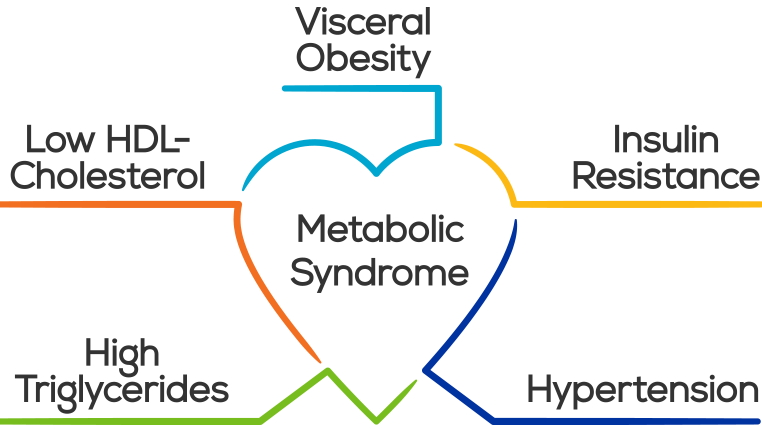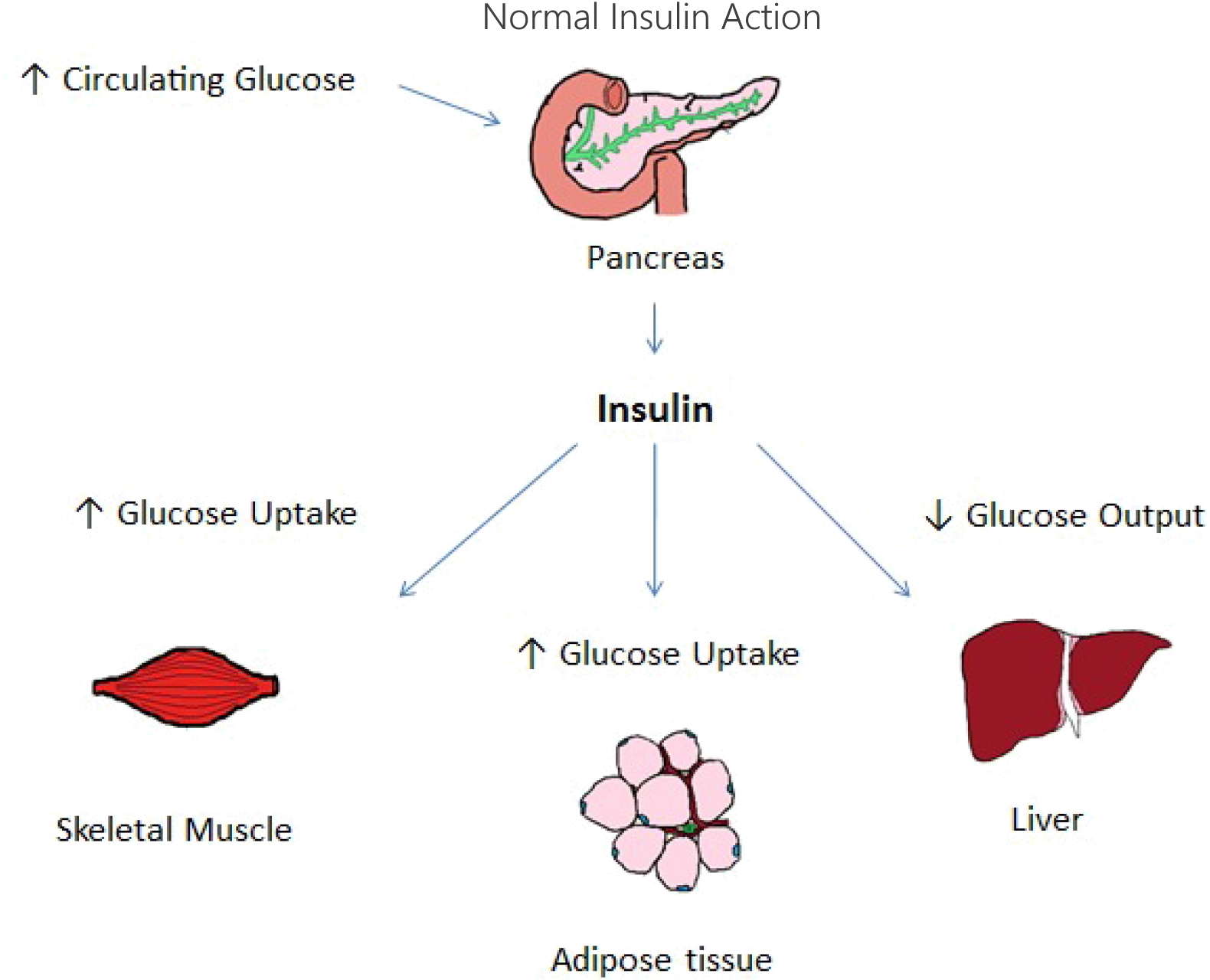Metabolic syndrome predisposes individuals to type 2 diabetes, obesity, cardiovascular disease, and other serious conditions.

Metabolic syndrome is defined where 3 of the 5 risk factors are present:
| Measure | Categorical Cut-Points |
| Waist circumference | Population and country specific definitions |
| Triglycerides* | ≥ 150 mg/dL |
| High Density Lipoprotein Cholesterol (HDL-C)* | Men < 40 mg/dL, Women < 50 mg/dL |
| Blood Pressure* | ≥ 130/ ≥85 |
| Fasting Glucose* | ≥ 100 mg/dL |
| *Drug treatment for elevated triglycerides, low HDL-C, elevated blood pressure or elevated glucose are alternate indicators. | |
Metabolic syndrome also predisposes individuals to:
- Non-alcoholic fatty liver disease (NAFLD)
- Non-alcoholic steatohepatitis (NASH)
- Polycystic ovarian syndrome (PCOS)
- Obstructive sleep apnea (OSA)
- Cancer
- Many other serious disease states

Defects in insulin signaling and dysregulated glucose and fatty acid metabolism are the suspected causes.
Lifestyle modification is the foundational intervention in treatment of metabolic syndrome. A healthy low-calorie, low fat diet and moderate physical activity of at least 150 minutes per week is recommended. Unfortunately, this intervention may not be enough for some.
Pharmacological treatments are prescribed additionally when necessary for patients based on obesity, hypertension, or dylipidemia.
![]()
The National Health and Nutrition Examination Survey (NHANES) estimates the prevalence of metabolic syndrome in adults (≥ 20 years old) in the United States from 2003 to 2012 as 33%.
